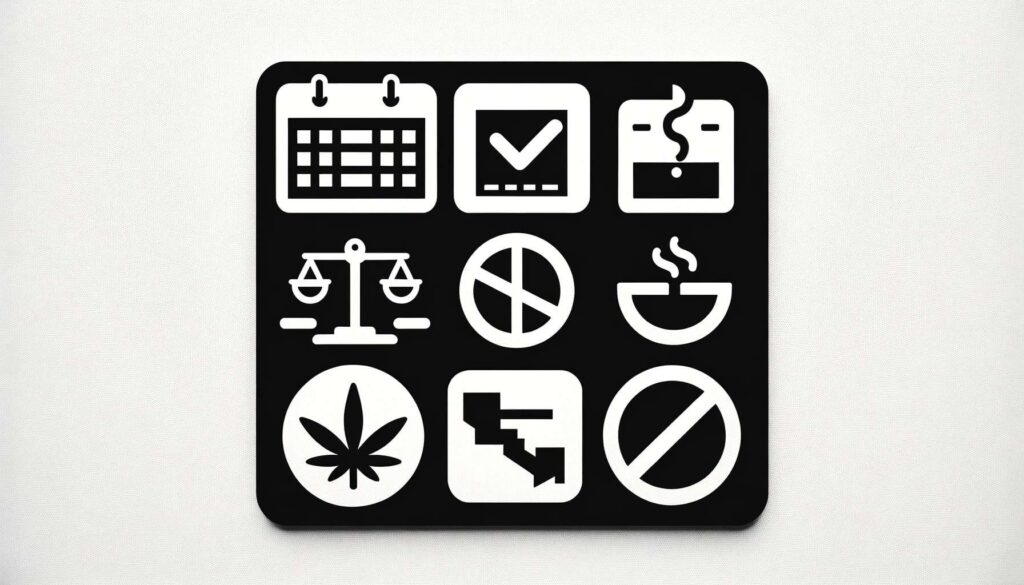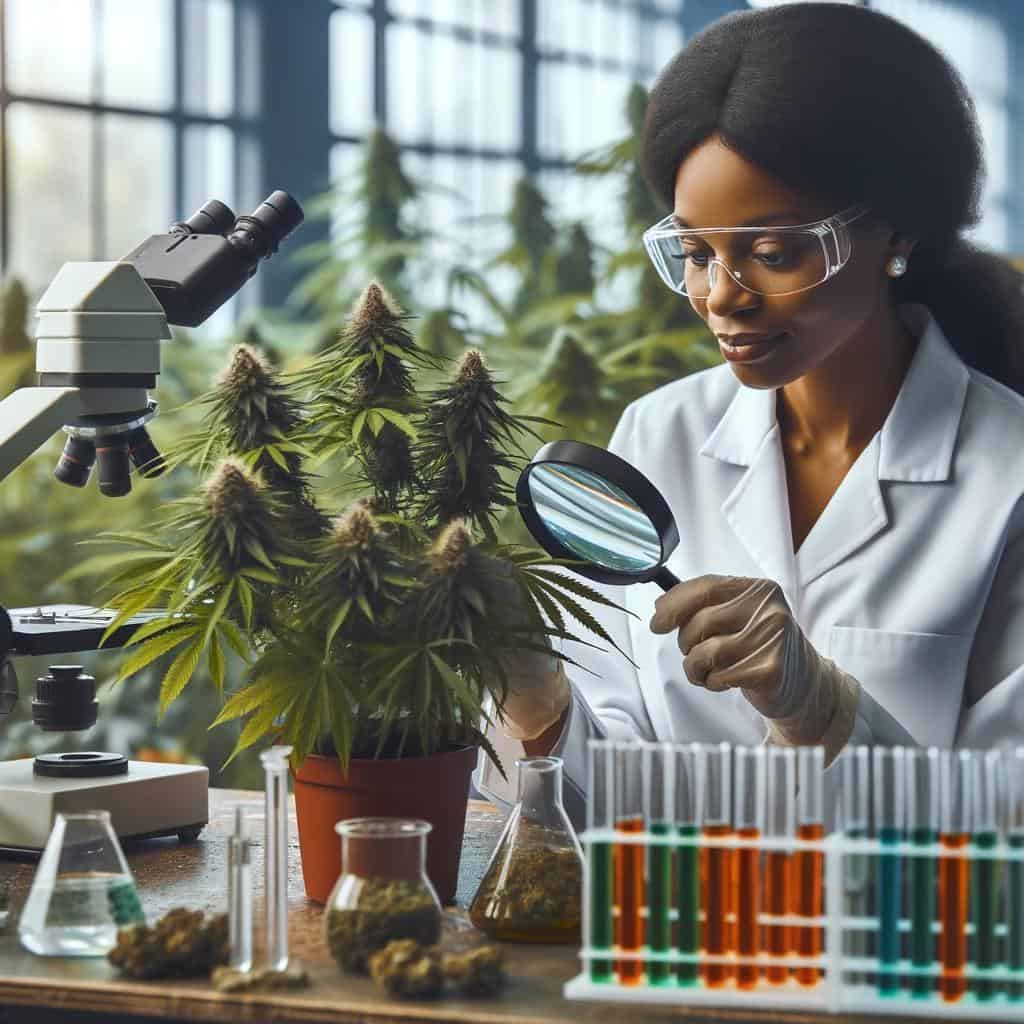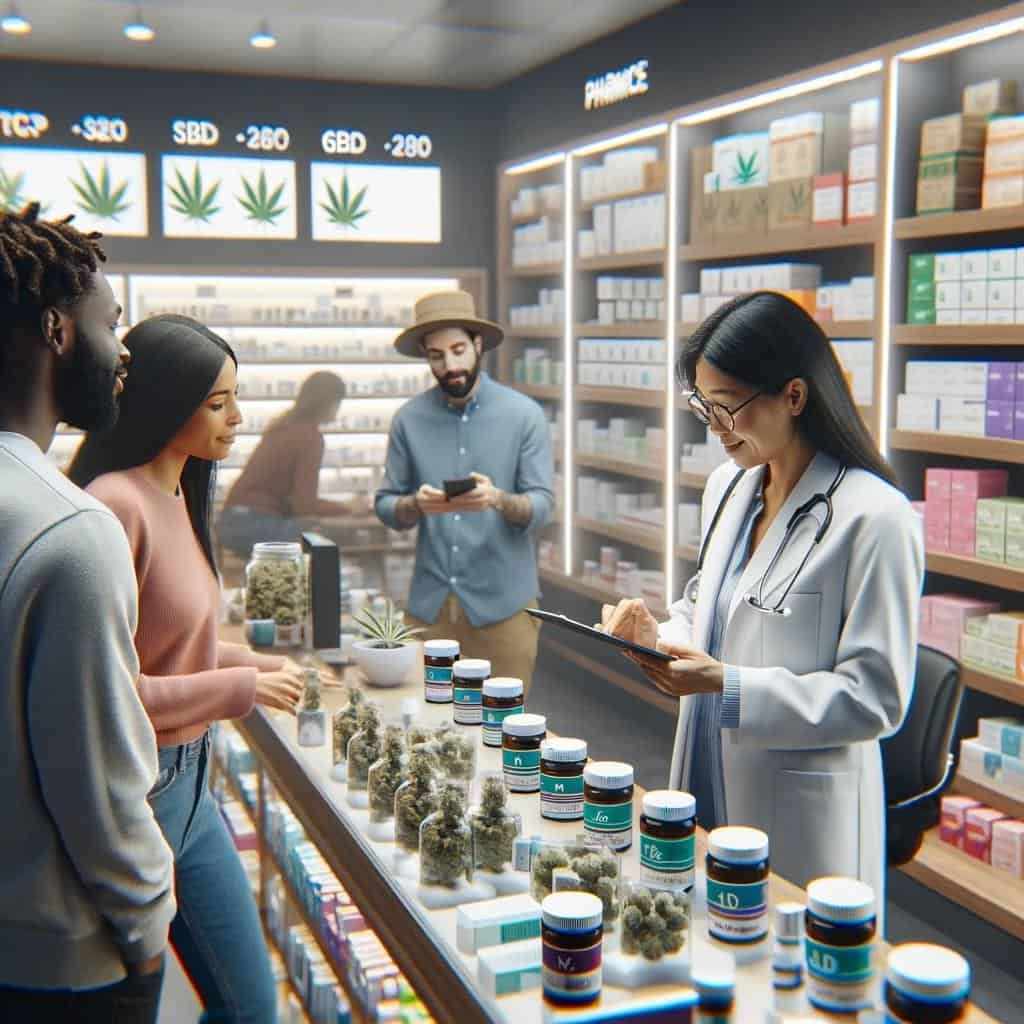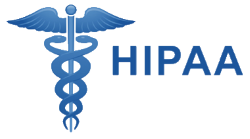- [email protected]
- (619) 304-4004
New York’s medical marijuana program and adult-use legalization reflect a balanced approach to cannabis, focusing on public health and legal access, with ongoing monitoring of usage trends and health impacts.
Medical Marijuana in New York

In New York, the usage guidelines and limitations for medical marijuana, as outlined by the Behavioral Risk Factor Surveillance System (BRFSS) and the New York State Department of Health, reflect a nuanced approach to cannabis use. In 2020, around 1.6 million adults in New York reported using cannabis, predominantly through smoking. The state’s medical cannabis program, established in 2016, allows for the prescription of cannabis for serious medical conditions, while adult-use cannabis was legalized in 2021.
This dual approach underscores New York’s commitment to both public health and legal access to cannabis. The data indicates a higher prevalence of cannabis use among younger adults, males, and LGBTQ+ individuals.
With these developments, New York continues to monitor cannabis use trends and their health impacts, balancing medical benefits with public safety.
In New York, the Medical Cannabis Program, governed by the Office of Cannabis Management, outlines specific guidelines for the use of medical marijuana.
These guidelines are designed to ensure safe and effective use while complying with state laws.
Patients in New York may be eligible for medical cannabis if deemed appropriate by a certifying health care provider. The first step in obtaining medical cannabis involves consulting with a marijuana doctors in New York to discuss whether it is a suitable treatment option. If deemed appropriate, the healthcare provider can issue a certification for medical cannabis use.
Registered organizations in New York are permitted to manufacture medical cannabis products in forms approved by the Office of Cannabis Management.
These forms include vape cartridges/pens, capsules/tablets, tinctures, oral sprays, powders, lozenges, ground plant preparations for vaporization, whole flower cannabis, and transdermal patches.
Seeds and immature plants for home cultivation are also available for certified patients or their designated caregivers at some dispensing locations.
As of October 5, 2022, certified patients and designated caregivers aged 21 or older registered with the Medical Cannabis Program are allowed to cultivate cannabis at home for the patient’s personal use. This provides an alternative means of access to medical cannabis.
Registered organizations may dispense up to a 60-day supply of medical cannabis to a certified patient or designated caregiver, following any recommendations or limitations made by the healthcare provider on the certification.
Patients should work with their certifying healthcare provider or dispensing facility pharmacist to determine appropriate product choices and dosages.
For more detailed information on the usage guidelines for medical marijuana in New York, the Office of Cannabis Management’s Medical Cannabis Program FAQs provides comprehensive insights into the program’s regulations, patient eligibility, forms of cannabis allowed, and home cultivation guidelines.
The limitations on the use of medical marijuana arise from a combination of regulatory, health, and safety considerations. These limitations are crucial in ensuring that the use of medical marijuana is both safe and effective for patients.
One of the primary reasons for limitations on medical marijuana use is the regulatory landscape. Cannabis is classified as a Schedule I substance under the Controlled Substances Act of 1970, indicating a high potential for abuse and no currently accepted medical use in treatment in the United States.
This federal classification creates significant barriers to research and limits the scope of legal medical use. State-level policies, such as those in New York, often conflict with federal regulations, further complicating the legal status of medical marijuana.
Health and safety concerns also play a significant role in the limitations placed on medical marijuana. Due to the lack of extensive research, partly resulting from federal restrictions, there are concerns about the long-term health effects of cannabis use.
Limitations on dosage, method of consumption, and patient eligibility are in place to mitigate potential health risks and ensure that medical marijuana is used in a controlled and medically supervised manner.
The federal restrictions on cannabis also impact research and development efforts. Researchers face challenges in obtaining cannabis for study purposes, and the quality and variety of cannabis available for research may not reflect the diversity of products used by consumers. This hampers the ability to conduct comprehensive research on the health effects of cannabis use.
In context, the limitations on medical marijuana use are influenced by a complex interplay of regulatory challenges, health and safety considerations, and research barriers. Understanding these factors is essential for patients, healthcare providers, and policymakers navigating the medical marijuana landscape.
For more detailed insights into the limitations on the use of medical marijuana, the full report titled “The Health Effects of Cannabis and Cannabinoids: The Current State of Evidence and Recommendations for Research” from the National Academies of Sciences, Engineering, and Medicine provides a comprehensive analysis of these challenges.
This resource offers a deeper understanding of the regulatory, health, and research-related factors that contribute to the current limitations on medical marijuana use.

In New York, the determination of medical marijuana dosage is a critical aspect of the Medical Cannabis Program, managed by the Office of Cannabis Management.
The process involves a combination of medical assessment, regulatory guidelines, and patient-specific factors.
The first step in determining the dosage of medical marijuana involves a consultation with a healthcare provider. If medical cannabis is deemed appropriate for a patient’s condition, the healthcare provider issues a certification. This certification includes recommendations or limitations on the dosage and form of medical cannabis based on the patient’s specific medical needs.
Registered organizations in New York are authorized to manufacture medical cannabis products in forms approved by the Office of Cannabis Management. These forms include vape cartridges/pens, capsules/tablets, tinctures, oral sprays, powders, lozenges, ground plant preparations for vaporization, whole flower cannabis, and transdermal patches. The dosage amounts of these products are regulated and monitored to ensure patient safety and efficacy.
The dosage of medical cannabis is tailored to each patient’s individual needs. Factors such as the patient’s medical condition, tolerance levels, and treatment goals are considered when determining the appropriate dosage.
Healthcare providers work closely with patients to adjust dosages as needed, based on the patient’s response to treatment and any side effects experienced.
What Are the Recommended Methods of Administration for Medical Marijuana?
The administration of medical marijuana involves various methods, each with its own set of benefits and considerations. Understanding these methods is crucial for patients and healthcare providers to ensure effective and safe treatment.
Smoking and vaporizing are two of the most common methods of cannabis administration. Smoking cannabis has a bioavailability between 10% and 25%, with about 50% of tetrahydrocannabinol (THC) delivered in the smoke.
However, approximately 50% of this is then exhaled, and a significant portion may be metabolized in the lungs. Inhalation effects are seen within minutes, and peak concentrations are high.
Vaporization, on the other hand, heats cannabis to temperatures just below combustion, producing fewer emissions. The actual dosage and amount of THC delivered through these methods can be difficult to determine and vary based on patient titration.
Oral ingestion of cannabis through edibles is another method used for treatment. The bioavailability of oral THC is between 5% and 20%, often considered to offer only 30% of the efficacy of smoking due to gastric degradation and first-pass effects. Peak concentrations are low and reached within one to three hours after consumption.
Sublingual tinctures are less common but are gaining popularity. These tinctures are typically extracted using ethanol and administered by dropping the extract under the tongue for absorption through deep lingual arteries. This method may offer faster results than oral ingestion and is a promising option for patients who cannot tolerate inhalation.
For more detailed information on the routes of administration for medicinal cannabis, the article “What Routes of Administration Are Available for Medicinal Cannabis?” from ONS Voice provides a comprehensive overview of these methods, their bioavailability, and considerations for oncology professionals and patients.
The legal landscape for medical marijuana in New York has evolved significantly, especially with the signing of the Marihuana Regulation & Taxation Act (MRTA) by Governor Andrew Cuomo on March 31, 2021.
This act has brought about several changes in the legal framework governing medical marijuana in the state.
These changes represent a significant shift in the medical marijuana landscape in New York, offering more flexibility and accessibility for patients and providers. The expansion of qualifying conditions and the allowance for home cultivation are particularly noteworthy, as they provide patients with more options for treatment and access.
For more detailed information on the legal limitations and changes in the use of medical marijuana in New York, the Office of Cannabis Management’s website and the NORML’s overview of New York Medical Marijuana Law provide comprehensive insights into the current regulations and program operations.
These resources offer valuable guidance for understanding the evolving legal framework and its impact on medical marijuana use in New York.
Ensuring compliance with medical marijuana usage guidelines is a shared responsibility involving various entities, each playing a crucial role in the regulated medical cannabis environment.
Healthcare providers and certifying practitioners are at the forefront of ensuring compliance. They are responsible for evaluating patients’ eligibility for medical marijuana use and providing certifications that include recommended dosages and forms of cannabis. These medical professionals must adhere to state regulations and guidelines while considering the patient’s specific medical needs.
State regulatory bodies, such as the Office of Cannabis Management in New York, oversee the medical marijuana program. They establish and enforce regulations regarding the cultivation, distribution, and dispensing of medical cannabis. These bodies also monitor registered organizations and healthcare providers to ensure adherence to state laws and guidelines.
Registered organizations and dispensaries that provide medical marijuana to patients have a responsibility to comply with state regulations. They must ensure that their products meet quality standards and are dispensed according to the specifications on patient certifications. These entities also play a role in educating patients about the proper use and storage of medical cannabis.
Patients themselves bear responsibility for using medical marijuana in accordance with their certifications. They must adhere to the prescribed dosage and administration methods and comply with restrictions on possession and use. Patients are also responsible for understanding the legal limitations of medical marijuana use, particularly regarding public consumption and driving under the influence.
Law enforcement agencies are involved in ensuring that medical marijuana is used legally and responsibly. They enforce laws related to illegal possession, distribution, and use of cannabis outside the parameters of the medical program.
In summary, ensuring compliance with medical marijuana usage guidelines is a collaborative effort involving healthcare providers, state regulatory bodies, dispensaries, patients, and law enforcement agencies. Each entity plays a vital role in maintaining the integrity and effectiveness of the medical marijuana program.
For more detailed information on the roles and responsibilities in ensuring compliance with medical marijuana usage guidelines, resources such as the Office of Cannabis Management’s website and the National Conference of State Legislatures provide comprehensive insights into the regulatory framework and operational aspects of medical marijuana programs.

In New York, the legal possession limits for medical marijuana are clearly defined to ensure that patients have access to their medication while maintaining regulatory compliance.
Patients registered in the New York Medical Cannabis Program are allowed to purchase and possess up to a 60-day supply of cannabis products. This limit is determined based on the recommendation and certification provided by the patient’s healthcare provider. The specific amount and form of cannabis that constitutes a 60-day supply can vary based on the patient’s medical needs and the healthcare provider’s assessment.
Qualified patients in New York are also permitted to cultivate cannabis at home for personal medical use. The law allows for the cultivation of up to six plants (with a maximum of three mature plants) per private residence.
These plants must be grown in an enclosed space that is not visible to the public. Additionally, patients are allowed to possess a total of up to five pounds of cannabis harvested from their plants.
Each certified medical marijuana patient in New York may designate up to five caregivers. These caregivers are authorized to assist the patient in obtaining, possessing, and administering medical cannabis.
These possession limits and cultivation provisions are part of New York’s efforts to ensure that medical marijuana patients have adequate access to their medication while adhering to state regulations. The state’s approach balances patient needs with regulatory oversight, aiming to provide safe and effective access to medical cannabis.
For more detailed information on the legal possession limits and regulations for medical marijuana in New York, resources such as NORML’s New York Medical Marijuana Law overview and the New York State Department of Health’s Medical Cannabis Program provide comprehensive insights into the state’s medical cannabis laws and guidelines.
In New York State, while the use of medical marijuana is legal, there are specific restrictions on where it can be consumed. Understanding these restrictions is crucial for medical marijuana patients to ensure compliance with state laws.
For more detailed information on the restrictions and legalities of medical marijuana use in New York, resources such as the NYC Health Department’s Cannabis in NYC: Know Your Rights and the New York State Office of Cannabis Management provide comprehensive guidelines and updates on the current regulations.
Medical marijuana, while offering therapeutic benefits, comes with certain health and safety considerations that patients and healthcare providers need to be aware of.
A comprehensive understanding of these factors is essential for the safe and effective use of medical cannabis.
The safety and efficacy of medical cannabis are subjects of ongoing debate and research. As a primary care doctor, one must weigh the safety of cannabis against the risks of alternative treatments. For instance, in treating chronic pain, it’s crucial to consider whether cannabis is safer than opiates.
The main safety concerns with cannabis include its effects during pregnancy and breastfeeding, potential to worsen or cause psychotic disorders, impact on short-term memory and cognitive functioning, cardiac and lung effects, addiction risk, drug interactions (especially with CBD), and the potential to cause or worsen anxiety at high dosages.
The dosage of medical cannabis is a critical factor in its safety and effectiveness. Many of the harms associated with cannabis use are dosage-related.
Healthcare providers often advise patients to “start low and go slow,” meaning to keep doses as low as possible for the desired effect. This approach helps minimize potential side effects and ensures a more controlled use of the medication.
Cannabis can be consumed in various ways, each with its own set of advantages and disadvantages. Inhalation (smoking or vaporizing) offers rapid onset and easier dosage titration but can irritate the lungs.
Edibles provide longer-lasting effects but require careful dosing to avoid taking too much. Tinctures offer a middle ground in terms of onset and duration, while topicals are generally safe with few concerns.
It’s important to remember that cannabis, while legal in many states for medical use, remains illegal at the federal level. This legal status affects its use in certain settings, such as federal public housing, and has implications for employment, especially in workplaces that conduct drug screenings.
For more detailed information on the health and safety considerations of medical cannabis, the article “Common questions about medical cannabis” from Harvard Health provides valuable insights.
This resource offers a comprehensive overview of the safety, efficacy, and proper use of medical cannabis, addressing common concerns and questions from both patients and healthcare providers.
When it comes to medical cannabis, special considerations are necessary for pediatric and elderly patients. These groups often have different physiological responses and medical needs, which impact how medical marijuana should be used and administered.
For more detailed information on usage guidelines for pediatric and elderly patients, resources such as the American Academy of Pediatrics and NCBI’s article on medical cannabis for older patients provide valuable insights. These resources offer comprehensive guidelines and considerations for the safe and effective use of medical cannabis in these specific patient groups.
Medical conditions significantly influence the usage guidelines and limitations for medical marijuana.
A study published in the Journal of General Internal Medicine provides insights into how different medical conditions affect the reasons for and methods of medical marijuana use.
The study underscores the need for personalized medical marijuana treatment plans that consider the specific medical condition, patient demographics, and effective communication with healthcare providers. Understanding these nuances can help optimize the therapeutic benefits of medical marijuana while minimizing potential risks.
Can Patients Travel with Medical Marijuana Within New York State?
For the most current and detailed information, it’s recommended to consult the New York State Office of Cannabis Management or a legal expert familiar with New York’s medical marijuana laws.
They can provide specific guidance on traveling with medical marijuana within the state, ensuring compliance with all legal requirements.

Transporting medical marijuana across state lines is a complex issue due to the interplay of state and federal laws. Here’s a detailed look at the travel and transporting guidelines and considerations:
In summary, due to federal law, transporting medical marijuana across state lines is illegal and carries significant risks. Patients should exercise caution and seek legal counsel to understand the implications fully.
For the most accurate and up-to-date information, consulting state-specific medical marijuana program guidelines and legal experts is recommended.
In New York, registered medical marijuana patients can legally possess up to a 60-day supply of cannabis products, as determined by their certifying healthcare provider. The specific amount depends on the individual’s medical needs and the provider’s recommendations.
No, the use of medical marijuana, especially smoking or vaping, is generally prohibited in public places in New York. This includes workplaces, bars, restaurants, parks, and other public areas. Patients are advised to use medical marijuana in private settings.
Yes, New York’s Medical Cannabis Program regulates the types of medical marijuana products that can be manufactured and sold. These include vape cartridges/pens, capsules/tablets, tinctures, oral sprays, powders, lozenges, ground plant preparations for vaporization, whole flower cannabis, and transdermal patches.
The dosage of medical marijuana in New York is determined by the certifying healthcare provider. It is based on the patient’s specific medical condition, treatment goals, and individual response to cannabis. Dosage may be adjusted over time as needed.
Yes, as of October 5, 2022, certified medical marijuana patients aged 21 or older are allowed to cultivate cannabis at home for personal medical use. They can grow up to six plants (with a maximum of three mature plants) per private residence. Designated caregivers can also cultivate cannabis for patients who are under 21 or unable to cultivate on their own.
In New York, the usage guidelines and limitations for medical marijuana, established under the state’s Medical Cannabis Program, reflect a careful balance between providing access to patients and ensuring public health and safety.
Registered patients are allowed to possess up to a 60-day supply of cannabis products, with the specific amount tailored to individual medical needs as determined by healthcare providers. The program also regulates the types of medical marijuana products available, emphasizing safe and controlled use.
The state’s approach to medical marijuana includes prohibitions on public consumption, particularly smoking and vaping, to align with public health standards. Additionally, the recent allowance for home cultivation empowers patients with more direct access to their medication, while still maintaining regulatory oversight.
These guidelines and limitations demonstrate New York’s commitment to facilitating medical marijuana use for therapeutic purposes, while also considering broader public health implications.
As the medical marijuana landscape continues to evolve, New York’s regulations may adapt to new research findings and societal changes, always with the goal of ensuring safe, effective, and accessible treatment for patients in need.

A1 Marijuana Doctors is an online platform, that connects marijuana patients to marijuana doctors in their state.

A1 Marijuana doctors is an online platform that connects medical patients to medical marijuana doctors. We offer a quick & easy way to apply for a medical marijuana card in all legal states.
Social Links
Contact Us
Quick Links
Trusted By




This website does not sell medicine nor controlled substances. It is a network of doctors & nurse practitioners, not a pharmacy / dispensary.
Copyright ©2023 A1 Marijuana Doctors. All rights reserved.